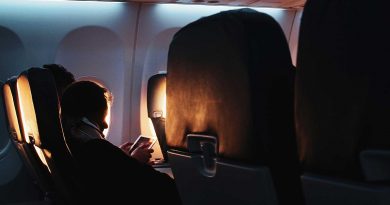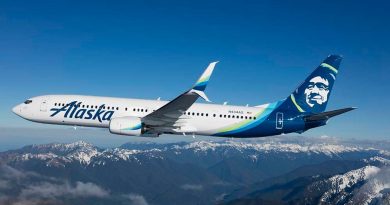FAA issues aircraft landing restrictions due to the risk of 5G
The FAA will prohibit airlines from performing landing procedures that require the use of radio altimeters at airports where interference from new-generation 5G cellular technology makes altimeter performance unreliable.
The agency adopted the airworthiness directive on Dec. 7 ahead of the anticipated Jan. 5 deployment of 5G wireless broadband networks by AT&T and Verizon in a higher frequency range, known as the C-Band spectrum, than had previously been allowed.
The deployment had been slated for Dec. 5, but the broadband companies agreed to a one month delay.
Radio altimeters are used primarily to measure a plane’s distance from the ground when flying at altitudes of approximately 2,500 feet and below.
In its Dec. 7 directive, the FAA said that interference can be unsafe when pilots are undertaking instrument landings during conditions of limited visibility, though a wide range of other automated safety systems rely on altimeter data.
- Related: FAA deploying technology to reduce airline taxi times
The agency is worried about interference because the frequency range of the C-Band spectrum is closer to the frequencies used by aircraft operators than the range occupied by current broadband technology.
The Federal Communications Commission auctioned off the newly allowed C-Band frequencies last February over objections from airlines and other aircraft operators. The move led to a Nov. 2 FAA bulletin warning aircraft operators, pilots and manufacturers about the possible malfunction of radio altimeters.
Late last month, Verizon and AT&T offered to reduce the power they emit from their 5G towers for six months, but the FAA spurned the offer.
In a statement this week, the FAA said it believes the expansion of 5G can safely co-exist with aviation.
“The FAA is working closely with the Federal Communications Commission and wireless companies, and has made progress toward safely implementing the 5G expansion. We are confident with ongoing collaboration we will reach this shared goal,” the agency said.
The Allied Pilot Association (APA), which represents American Airlines pilots, praised the FAA’s approach in a statement.
“If the rollout proceeds as planned, without implementing mitigations that the aviation community is recommending, we believe a significant number of flight diversions would occur, with flight crews acting out of an abundance of caution,” APA president Eric Ferguson said. “We do not want the passengers we serve to experience this unnecessary inconvenience.”
The FAA has not yet determined which airports are close enough to C-Band base stations for flight operations to be impacted by interference. The agency said it will use data provided by communications companies to make those determinations and then issue formal Notices to Airmen as necessary.
Prohibitions could be placed on various approach and landing procedures that rely upon radio altimeters, including instrument landing system approaches and the use of enhanced flight vision systems for runway touchdown.
Source: Read Full Article



